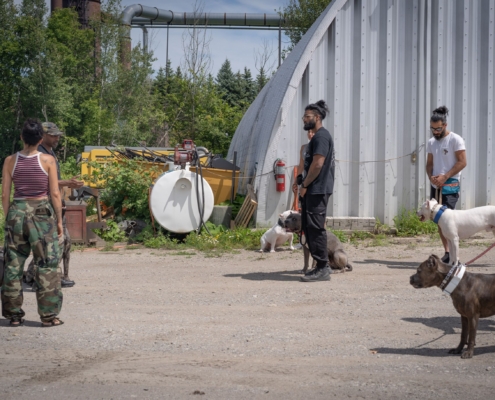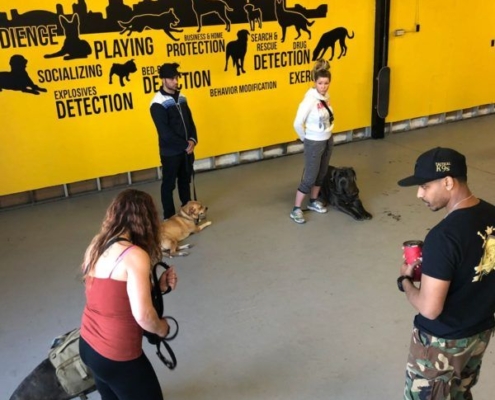GROUP LESSONS
(Once there is a basic level of obedience, (a few private sessions) and the handler is comfortable, it’s time to do group sessions with more distractions to achieve a better level of control, confidence, and obedience)
Group dog training sessions typically involve a class of dog owners and their pets going through various exercises and commands. Here’s a general description of what you might expect in a group dog training session:
- Introduction and Orientation: The session usually starts with introductions, where the trainer and participants get to know each other. The trainer may also outline the goals for the session and what participants can expect to learn.
- Basic Commands: The trainer will teach basic commands such as sit, stay, come, and heel. These commands form the foundation for further training and help establish communication between the owner and the dog.
- Socialization: Group training sessions provide an opportunity for dogs to socialize with other dogs and people in a controlled environment. This helps them learn appropriate behavior around others and reduces fear or aggression towards unfamiliar dogs or humans.
- Leash Training: Proper leash manners are crucial for both the dog’s safety and the owner’s control. The trainer may demonstrate techniques for walking politely on a leash without pulling or lunging.
- Problem-Solving: The trainer will address common behavior issues such as jumping, barking, or leash pulling and provide strategies for managing and correcting these behaviors.
- Distraction Training: Dogs are often trained in environments with distractions to help them learn to focus and obey commands even when there are other stimuli present. Group training sessions may introduce controlled distractions like other dogs, toys, or noises to simulate real-world situations.
- Positive Reinforcement: Most group training sessions utilize positive reinforcement techniques, such as treats, praise, or play, to encourage desired behaviors. This creates a positive learning experience for the dog and reinforces the bond between the owner and their pet.
- Q&A and Feedback: Throughout the session, participants are encouraged to ask questions and seek clarification on training techniques. The trainer may also provide feedback on individual progress and offer personalized advice to address specific challenges.
- Homework and Practice: Owners are typically given exercises or assignments to practice at home between sessions to reinforce what they’ve learned in class. Consistent practice is key to achieving lasting results in dog training.
- Cool Down and Wrap-Up: The session may end with a brief cool-down period where dogs are allowed to relax and interact with each other under supervision. The trainer may summarize key points covered during the session and provide information about upcoming classes or resources for further learning.
Group training sessions offer numerous benefits, including socialization opportunities, peer support, and cost-effectiveness compared to one-on-one training. Plus, they can be a fun way for both dogs and owners to learn new skills together.
Group Sessions
$90/Drop In Session | 4 Session Package /$280



